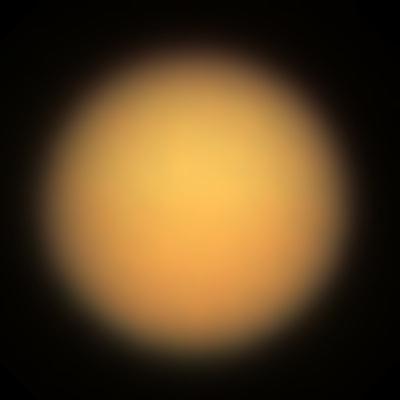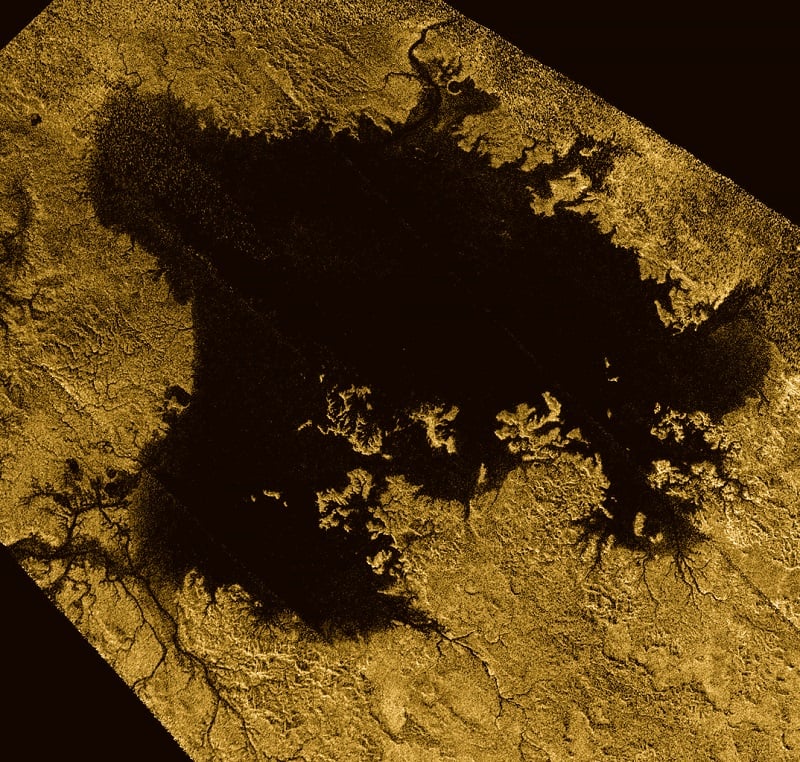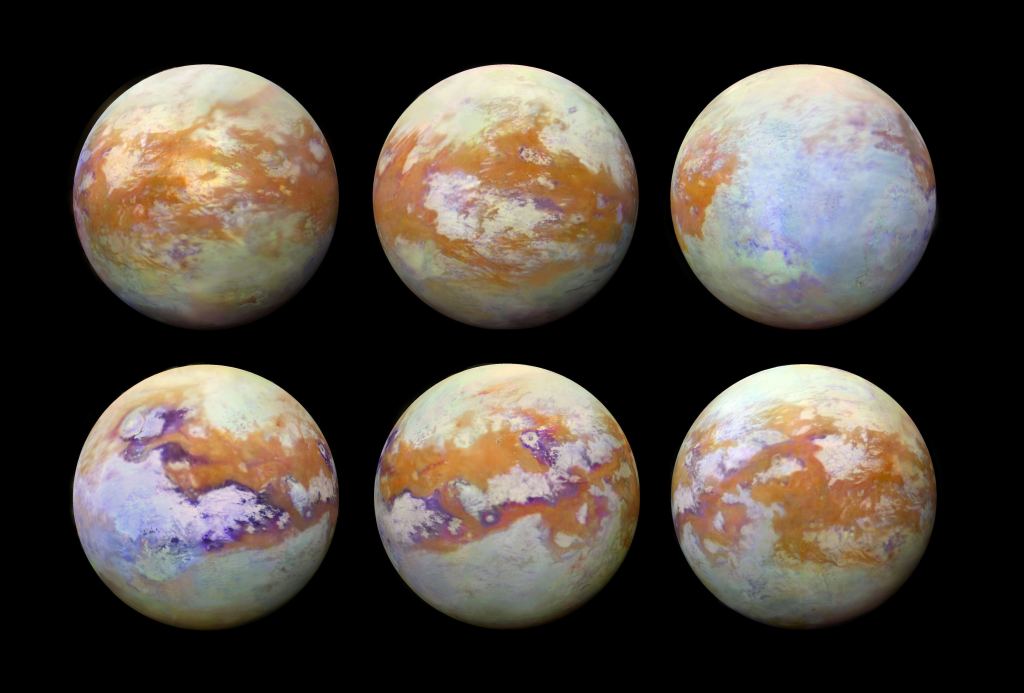Saturn's moon Titan is a very strange place. It's surrounded by a dense, opaque atmosphere, the only moon in the solar system with an atmosphere to speak of. It has lakes of liquid methane on its surface, maybe some cryovolcanoes, and some scientists speculate that it could support a form of life. Very weird life.
But we still don't know a lot about it, because we haven't really seen much of the surface. Until now.
From a distance you can't see much of Titan. The Hubble Space Telescope took this picture of Titan in 1994, and it looks like a big, blurry orange.
But thanks to the Cassini mission, we have some better images.
In visible light you can't see much through the dense atmosphere. The Huygens probe, which was launched from the Cassini spacecraft, made its way down to the surface of Titan in 2005. Hanging beneath a parachute, the little probe made a 2.5 hour journey to the surface, and captured some stunning images of the unusual world.
The Huygens probe helped show us the true nature of the large moon.
Cassini also returned some images of the surface of Titan that had everybody on the edge of their seats.
False radar images showed us Titan's shorelines, rivers, and lakes filled with liquid. But no water flowed here. Titan is a frigid -180 degrees Celsius. Rather than water, liquid hydrocarbons like methane and ethane flow on the surface.
But all of these are just snapshots. Tantalizing for sure, but still just snapshots.
The Cassini mission ended in 2017, and during its mission the spacecraft gathered an enormous amount of data. Now, scientists with the mission have combined a lot of that data and observations to produce this stunning and detailed global image of the surface of Titan.
This global mosaic was created primarily with Cassini's infrared instrument, the Visual and Infrared Mapping Spectrometer (VIMS). VIMS was able to pierce Titan's thick atmosphere and gather some detailed observations of the surface of Titan. The overall image combines VIMS images from all kinds of lighting conditions and viewing conditions over the course of the Cassini mission. It also combines images taken by the Huygens probe during its descent.
The colours reflect variations in materials on the moon's surface. The moon's equatorial dune fields appear a consistent brown colour, while bluish and purple hues may indicate materials enriched in water ice.
The images show the rich variation of features on the surface of Titan. It reveals far more about the moon than we knew before. And yet, it's still in some ways looks kind of grainy. That speaks to the high quality images from space that we're getting spoiled with. Future missions to Titan will have much higher-resolution instruments than VIMS, which was designed and built in the mid-1990s, and should reveal even more amazing detail of the surface of this world.
The Cassini team also released this video showing new visuals of Titan's surface.
A less-refined version of this image was released in July, 2018. But since then, the image has been worked on painstakingly to remove seams in the image and improve its quality.
Sources:
- Press Release: Seeing Titan with infrared eyes
- JPL Photojournal page: PIA21923: Seeing Titan with Infrared Eyes
- Hubble Space Telescope images of Titan's surface
- Hubble Observes Surface of Titan
- Press Release: Ten Years Ago, Huygens Probe Lands on Surface of Titan
- Visible and Infrared Mapping Spectrometer (VIMS)
 Universe Today
Universe Today




